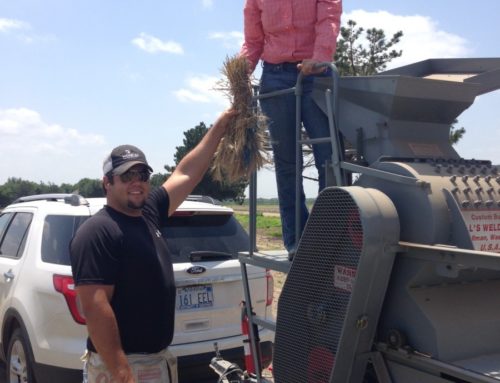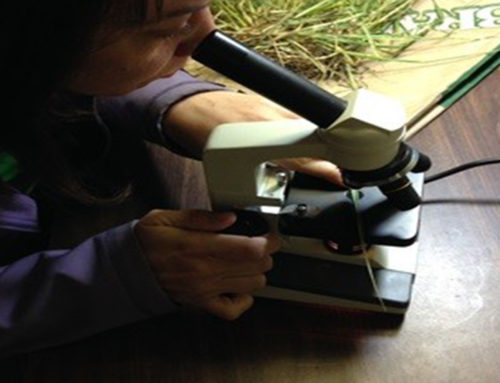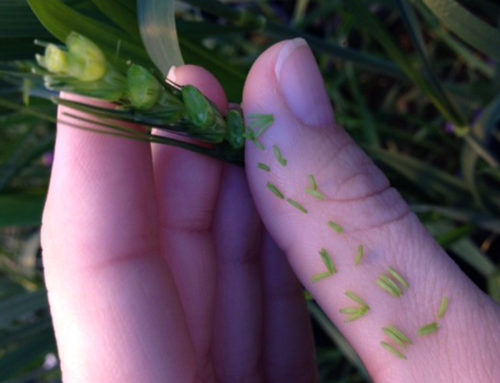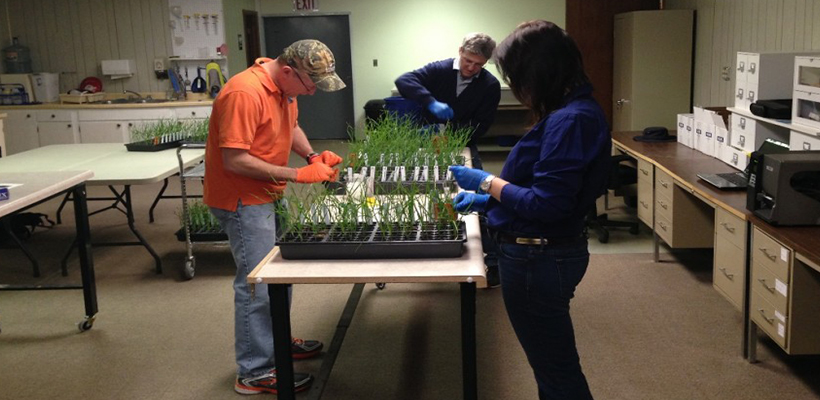
Or “How to make Wheat Streak Mosaic Virus soup!”
A few days ago, the LCS Hard Red Winter Wheat breeding program went viral, both physically and literately! John Fellers, USDA ARS Molecular Biologist, came down from Manhattan to show us how to make wheat sick with wheat streak mosaic virus (WSMV). He was even cool enough to prepare the virus inoculant and give us the low down on how to do it.
First, you need the darn critter itself. It can be garnered from symptomatic wheat leaf tissue. Lab tests can check for the presence of the virus to make sure you do indeed have WSMV, and that you don’t have any other types that have very similar symptoms on wheat leaves. Then you simply grind up those symptomatic leaves and make a slurry or soup chock-full of WSMV.
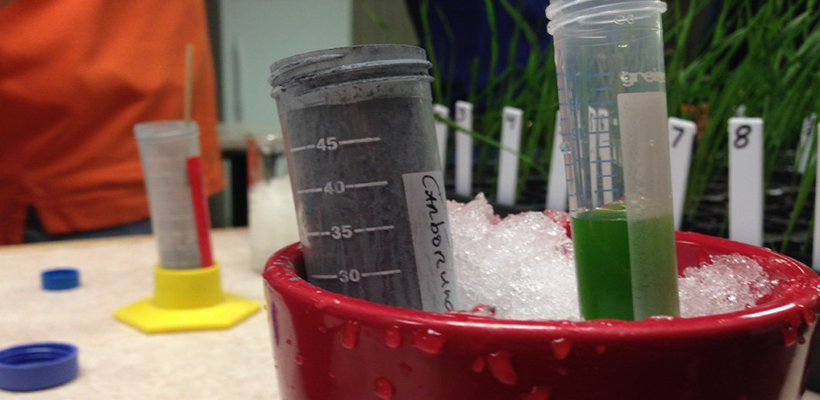
WSMV is vectored by a very teeny tiny mite, the wheat curl mite. I actually worked on wheat curl mite resistance during my PhD and believe me, they are very small. I used to transfer mite eggs using a single hair of a paint brush in a sort of mite wrangling exercise. (Don’t ask why. In research, you often find yourself doing very strange things. That’s how innovation happens.)
Anyway, the mites feed on the wheat and inject the WSMV into the plants. So in order to inoculate wheat seedlings with WSMV, you have to get the virus into the plant. In artificial screenings, this is done without the mite (remember, I told you they were miniature and a hassle to wrangle). We use carborundum to bruise, scrape, and injure the young wheat leaves. Carborundum is a silver powdery metal that is slightly abrasive. We rub just a dab of the powder on the leaves and follow it with a dab of the WSMV “soup.” And there you have it; you just gave a wheat plant a shot of WSMV!
We will have to wait for the symptoms to develop; then we will rate the plant’s reaction. We are hoping to see differences and use this information to make informed decisions on which experimental varieties to carry forward in the breeding process.
One interesting side story: WSMV is a poty virus, similar in biology to other poty viruses like Papaya ringspot virus. And as viruses go, it is a particularly famous/infamous one. You see, Papaya ringspot virus almost had the honor of completely destroying Hawaiian papaya production. If not for scientists figuring out they could actually use the virus’ own coat protein against itself, Hawaiian papaya would instead be grown in places like India. Until next time – Marla


